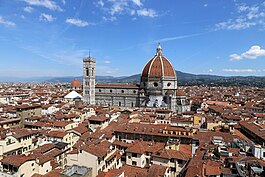**Period and Overview of the Renaissance:**
– Renaissance period began during the crisis of the Late Middle Ages
– Conventional end by the 1600s with the waning of humanism
– Different characteristics in regions like Italian Renaissance, Northern Renaissance
– Some proponents suggest a long Renaissance from the 14th to 17th century
– Cultural movement affecting European intellectual life in the early modern period
– Started in Italy and spread to the rest of Europe by the 16th century
– Influence felt in various aspects like art, architecture, philosophy, literature
– Renaissance scholars used the humanist method in study
– Revival of neoplatonism and focus on literary and historical texts
**Intellectual Basis and Spread of the Renaissance:**
– Derived from humanism and rediscovery of classical Greek philosophy
– Development of perspective in oil painting and concrete making
– Metal movable type sped dissemination of ideas
– Innovations in Latin and vernacular literatures
– Renaissance man concept inspired by polymaths like Leonardo da Vinci
– Began in Florence and later spread to other Italian states
– Major centers included Venice, Genoa, Rome, and Naples
– Renaissance spread throughout Europe and to other territories
– Historiography of the Renaissance is complex
**Cultural Contributions and Origins of the Renaissance:**
– Effort to revive and surpass classical antiquity
– Great social change in art, architecture, politics, literature, science
– Contributions in education reform, politics, diplomacy
– Artistic developments by figures like Leonardo da Vinci and Michelangelo
– Renaissance saw revolutions in intellectual and social scientific pursuits
– Renaissance ideas originated in Florence in the 13th and 14th centuries
– Notable figures like Dante Alighieri and Petrarch contributed to the Renaissance
– Competition between artists like Ghiberti and Brunelleschi fueled creativity
– Proto-Renaissance movements began around 1300 in various European regions
**Influential Intellectuals and Economic Impact of the Renaissance:**
– Masaccio, Machiavelli, Pico della Mirandola, Erasmus, Thomas More contributed significantly
– Italian city-states in the High Middle Ages innovated responsive government, Christianity, and capitalism
– City-republics of Italy adopted principles of capitalism from monastic estates
– Italian city-republics initiated a Commercial Revolution preceding the Renaissance
– The Commercial Revolution was vast and unprecedented, financing the Renaissance
– Historian Rodney Stark emphasizes the economic innovations of Italian city-states over the Renaissance
**Social and Political Structures, Impact of Black Death, and Characteristics of the Renaissance:**
– Italy’s unique political structure during the Late Middle Ages allowed for cultural flourishing
– Influential frescoes and writings reflecting anti-monarchical thinking in Renaissance Italy
– The impact of the Black Death on worldviews, art, and economics
– Cultural conditions in Florence, including the Medici family’s patronage
– Characteristics of Renaissance humanism, education, and the integration of science and art
The Renaissance (UK: /rəˈneɪsəns/ rən-AY-sənss, US: /ˈrɛnəsɑːns/ ⓘ REN-ə-sahnss) is a period in history and a cultural movement marking the transition from the Middle Ages to modernity, covering the 15th and 16th centuries and characterized by an effort to revive and surpass the ideas and achievements of classical antiquity; it was associated with great social change in most fields and disciplines, including art, architecture, politics, literature, exploration and science. It began in the Republic of Florence, then spread to the rest of Italy and later throughout Europe. The term rinascita ("rebirth") first appeared in Lives of the Artists (c. 1550) by Giorgio Vasari, while the corresponding French word renaissance was adopted into English as the term for this period during the 1830s.

The Renaissance's intellectual basis was its version of humanism, derived from the concept of Roman humanitas and the rediscovery of classical Greek philosophy, such as that of Protagoras, who said that "man is the measure of all things". Early examples were the development of perspective in oil painting and the revived knowledge of how to make concrete. Although the invention of metal movable type sped the dissemination of ideas from the later 15th century, the changes of the Renaissance were not uniform across Europe: the first traces appear in Italy as early as the late 13th century, in particular with the writings of Dante and the paintings of Giotto.
As a cultural movement, the Renaissance encompassed innovative flowering of Latin and vernacular literatures, beginning with the 14th-century resurgence of learning based on classical sources, which contemporaries credited to Petrarch; the development of linear perspective and other techniques of rendering a more natural reality in painting; and gradual but widespread educational reform. In politics, the Renaissance contributed to the development of the customs and conventions of diplomacy, and in science to an increased reliance on observation and inductive reasoning. Although the Renaissance saw revolutions in many intellectual and social scientific pursuits, as well as the introduction of modern banking and the field of accounting, it is perhaps best known for its artistic developments and the contributions of such polymaths as Leonardo da Vinci and Michelangelo, who inspired the term "Renaissance man".
